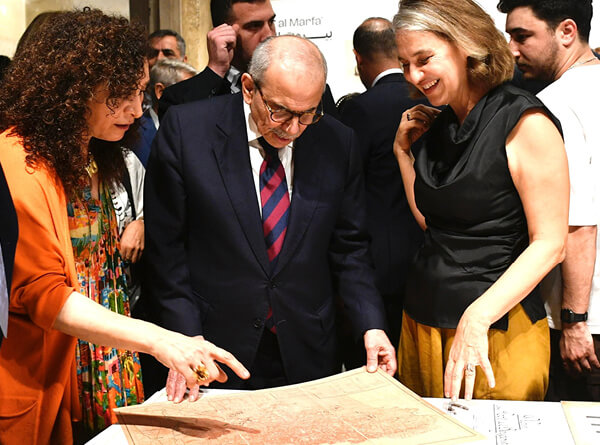Hiba Sinno, Office of Communications, Communications@aub.lb
A city is often understood through the places where it meets the world. It is the flow of people, goods, cultures and ideas through these spaces that shapes its character and place in the region. In Beirut, this meeting point has long been the port – a threshold of movement, exchange and identity. Beirut al-Marfa'now on view at the Beit Beirut Urban Observatory, invites visitors to reconsider this relationship and consider how the port and the city have shaped each other over time.
The Beit Beirut Urban Observatory is a collective space that brings together cultural actors from the fields of architecture, urban planning, planning and landscape design to reflect research and inform the public about the future of our cities through exhibitions, discussions and public programs. Its founding members include the AUB Neighborhood Initiative and the Arab Center for Architecture. The Observatory's mission is based on three collective actions that the founders believe must guide urban work in Lebanon today: Preserve, Repair, Share. Urgent questions are raised that invite debate: How do we activate public space? Who has access to housing, mobility and green and community spaces? What does it take to make a city livable for everyone?
The exhibition opened on November 5 in Beit Beirut and attracted more than 400 visitors, including Prime Minister Nawaf Salam, ministers, municipal officials, members of the Beirut Port Board and personalities from Lebanon's cultural and academic community. The meeting reaffirmed Beit Beirut's role as a civic space for public dialogue on memory, heritage and urban futures.
Produced by Hkeeli and curated by Hala Younes, Hadi Mroue and Mona El Hallak, Head of AUB's Neighborhood Initiative, the exhibition was made possible with the support of the General Directorate of Antiquities of the Ministry of Culture and the Ministry of Culture and Culture Oriental library at Saint Joseph University Beirut.
“The aim of this exhibition is to explore Beirut’s relationship with its port – a relationship that is historically inseparable,” says Younes. “Beirut was a port before it was a city.” She explains that the exhibition begins with a historical timeline that traces how the development of the port shaped the emergence of modern Beirut, with key moments taking place in Karantina, Charles Helou, the First Basin and along the waterfront. “This historic moment will not come again,” she added. “We experienced August 4th – and Beirut and its port experienced it too.”
The explosion of August 4, 2020 is present throughout the exhibition—not as a single tragedy, but as a rupture that uncovered deeper questions about governance, accountability, and collective memory. A text by writer Elias Khoury, featured in the exhibition as a touching voice-over by El Hallak, reflects on Beirut as a “broken mirror,” evoking the disorientation of a city forced to endure loss while searching for ways to move forward.
Still Beirut al-Marfa' it's not just about memory. It examines how the port might be rebuilt and what this reconstruction means for Beirut's identity and public life. Visitors encounter the various proposals developed for the reconstruction of the port – each linked to a different vision of Lebanon's economic and geopolitical future. “Every study must clearly state who commissioned it, which ministry, who developed it and who financed it,” emphasizes Younes. “A decision must be made – but above all, the public must be involved. If no regulator is created, if no law regulates the port, nothing will move forward.”
El Hallak emphasizes the importance of Beit Beirut as one of the most important publicly owned cultural spaces in Beirut. “This is a place where we can talk about the city – its past and its future,” she says, addressing the Prime Minister and Cabinet members present. “We are working and we don't want anything – just your moral support. Because what is happening here affects Beirut, all of Beirut.”
It moves between archive material, urban research, testimonials, suggestions and personal reflection Beirut al-Marfa' invites visitors to consider that rebuilding infrastructure also requires restoring trust, public life and the city's ability to imagine its future.
The exhibition is open in Beit Beirut (Sodeco Junction) from Wednesday to Sunday from 12:00 p.m. to 8:00 p.m. until February 8, 2026.
